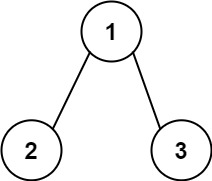1
2
3
4
5
6
7
8
9
10
11
12
13
14
15
16
17
18
19
20
21
22
23
24
25
26
27
28
29
30
31
32
33
34
35
36
37
38
39
40
41
42
43
44
45
46
47
48
49
50
51
| // @lc code=start
// Definition for a binary tree node.
// #[derive(Debug, PartialEq, Eq)]
// pub struct TreeNode {
// pub val: i32,
// pub left: Option<Rc<RefCell<TreeNode>>>,
// pub right: Option<Rc<RefCell<TreeNode>>>,
// }
//
// impl TreeNode {
// #[inline]
// pub fn new(val: i32) -> Self {
// TreeNode {
// val,
// left: None,
// right: None
// }
// }
// }
use std::cell::RefCell;
use std::rc::Rc;
impl Solution {
/// ## 解题思路
/// - 递归
/// 1. 若节点为空,则遍历结束,未找到;
/// 2. 若为叶子节点,且节点val==剩下的target, 则找到;
/// 3. 否则递归在左右子树中查找target-node.val;
pub fn has_path_sum(root: Option<Rc<RefCell<TreeNode>>>, target_sum: i32) -> bool {
/// helper
fn helper(node: &Option<Rc<RefCell<TreeNode>>>, target_sum: i32) -> bool {
match node {
None => false,
Some(n)
if n.borrow().left.is_none()
&& n.borrow().right.is_none()
&& n.borrow().val == target_sum =>
{
true
}
Some(n) => {
helper(&n.borrow().left, target_sum - n.borrow().val)
|| helper(&n.borrow().right, target_sum - n.borrow().val)
}
}
}
helper(&root, target_sum)
}
}
// @lc code=end
|

